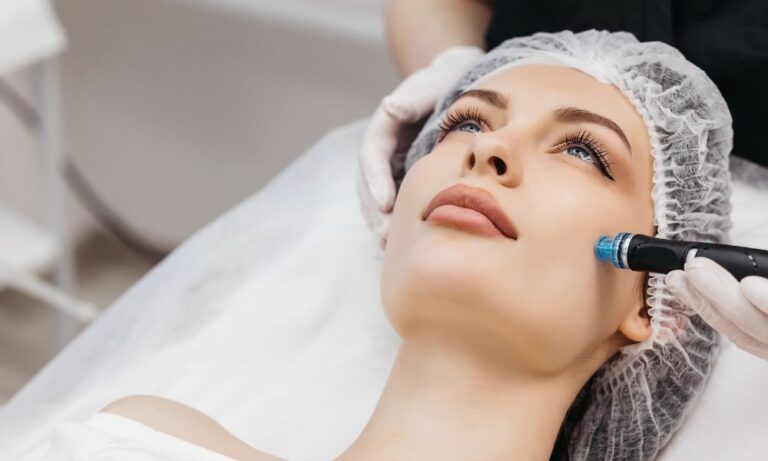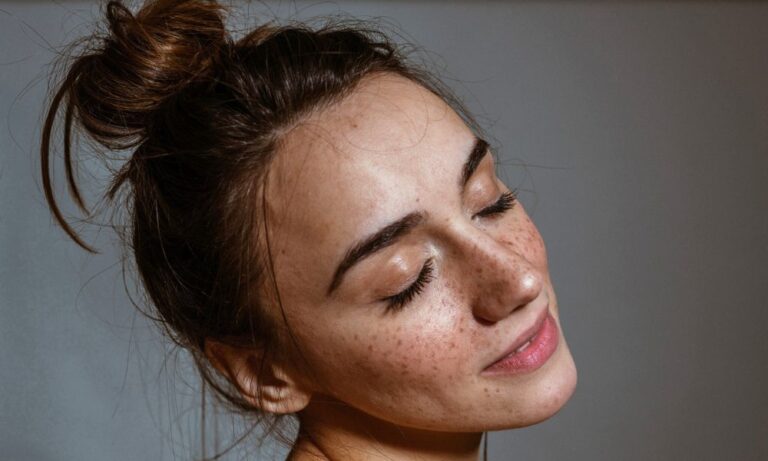The best skin of your life may well be ahead of you. Sure, with each passing decade, you face fresh challenges in your quest for a radiant complexion: There are the newfound crow’s feet in your 40s, the postmenopausal dryness in your 50s, and the sagging that sets in by your 60s.
But the right products and procedures will prepare you to meet these challenges head-on.
“These days, it’s perfectly reasonable to expect your skin to get better as you age – no matter what the date on your driver’s license,” says Ranella Hirsch, MD, president of the American Society of Cosmetic Dermatology and Aesthetic Surgery and a cosmetic dermatologist in Cambridge.
Still, knowing what’s right for you – from the most potent creams to the latest lasers – can be confusing. That’s where this decade-by-decade guide comes in. It’s filled with everything you need to know, including exactly what to use when. Follow along and your skin’s future will look very bright.
YOUR 40S: TREAT, TONE AND TEXTURE
At this stage, cell turnover slows, making skin lackluster. Meanwhile, brown splotches (the result of increased melanin production) and redness (the mark of tiny broken capillaries) become more prominent.
The collagen and elastin that keep skin firm also start to break down. As a result, “creases you only used to see when you were tired or actually moving your face become apparent all the time,” says Amy Wechsler, MD, an assistant clinical professor of dermatology at SUNY Downstate Medical Center.
Pores also tend to become enlarged with the loss of collagen.
Best home treatments
Embrace retinoids
These vitamin A derivatives boost collagen production (which softens fine lines and minimises pores). Retinoids rev up sluggish cell turnover, so skin becomes smoother and more radiant, and dark spots fade.
Prescription versions such as Renova yield noticeable changes after about eight weeks; retinol, the strongest over-the-counter option, takes 12 weeks.
Choose a product formulated with up to 1 per cent retinol, the highest amount available OTC, depending on your skin’s tolerance.
Ease in by using a retinoid every third night for at least two weeks. Apply it every other night for the next two weeks, ramping up to nightly application.
Summer’s the ideal time to get started on a retinoid – the increased humidity tempers dryness that might occur as your skin acclimates.
Exfoliate regularly
Once you’ve built up to a nightly retinoid application, boost its benefits by substituting in an alpha-hydroxy acid twice a week.
“Both ingredients exfoliate, leaving skin brighter and smoother,” says New Orleans-based dermatologist Mary Lupo, MD. “But because they stimulate cell renewal in different ways, you’ll get maximum improvement using both.”
If skin is dry, choose an AHA formulated with moisturising lactic acid.
Consider hydroquinone
This agent, which inhibits the production of melanin, is one of the most effective ways to fade blotchiness, says Hirsch. OTC creams contain 2 per cent HQ, which lightens subtle discolouration over several months.
Prescription versions boast 4 per cent, and daily spot treatment can diminish dark patches in six to eight weeks.
“Keep in mind, though, that a single afternoon spent unprotected in the sun can undo all that hard work,” says Wechsler.
Use HQ only for three months. After that, maintain results with a skin lightener that contains kojic acid or licorice extract.
Turn to the pros
Reduce brown spots
Intense pulsed light (IPL) employs a broad wavelength of light to target brown spots and red areas, destroying them without damaging the upper layers of the skin; you may look a little pink for an hour after treatment.
Four to six monthly sessions at about US$400 each should be enough to even out your complexion; a maintenance session every six to 12 months keeps up the results.
Restore your glow
A series of LED (light-emitting diode) treatments, either on their own or in conjunction with IPL, uses painless light energy to minimise fine lines, reduce pore size, diminish dark spots, and give skin a smoother texture.
There’s no downtime: You sit in front of a panel of 2000 tiny pulsing lights for up to 40 minutes; results become more noticeable after three weeks.
“LED thickens the skin, so it looks more luminous when light bounces off it,” says David Goldberg, MD, a clinical professor of dermatology and director of laser research at Mount Sinai School of Medicine.
A recent study published in the Journal of Drugs in Dermatology also showed that the device promotes new collagen formation and decreases inflammation that causes collagen to break down. Six monthly treatments at about US$100 each and twice-yearly touch-ups are recommended.
Erase lines
Botox is the surest way to smooth creases you’re already noticing and prevent more. It temporarily relaxes facial muscles so they can’t move and create wrinkles.
“Botox retrains your muscles, so the effects last longer and longer,” says Goldberg. “Some patients who start when they’re 45 are coming in only twice a year by the time they’re 50.” Each treatment costs approximately US$400, and results last about four months.
YOUR 50S: HYDRATE AND PLUMP
The average age of menopause is 51, and with the drop in hormones, skin becomes parched and brown spots increase. Deeper folds, including the “smile” lines that run from the corners of the nose to the corners of the mouth, develop as skin loses underlying fat.
This loss also “hollows out” the under-eye area, says Kenneth Beer, MD, an assistant professor of dermatology at the University of Miami.
Best home treatments
Switch to a gentler cleanser
Replace oil-stripping gel cleansers or bar soaps with a creamy face wash.
Choose double-duty moisturisers
“Look for formulas that contain a humectant to draw water in and an occlusive to create a barrier that prevents it from evaporating,” says Arielle Kauvar, MD, a clinical associate professor of dermatology at New York University Medical Center.
Rethink your retinoid
If you haven’t already, switch to Renova or Atralin; both are moisturising.
Take care of your eyes
Collagen and fat loss under delicate eye skin makes crow’s feet more apparent. Plump lines with a nightly application of an eye cream.
Look for one with silicone, an emollient that temporarily “spackles” fine lines, says Heidi Waldorf, MD, an associate clinical professor of dermatology at Mount Sinai School of Medicine.
Turn to the pros
Plump lines and lips
Filling materials injected into your skin enhance hollow areas. For a natural look, choose a filler that contains hyaluronic acid, formulated from a substance found in skin. Both Restylane and Juvederm last about six months and are ideal for plumping the smile lines, lips, and under-eye area. Perlane, which is thicker, is used to fill deeper folds and sunken cheeks and lasts up to eight months.
Prevent wrinkles
Botox softens new folds and increases the longevity of fillers by minimising the muscle movement that can cause them to dissipate.
Improve tone
The Q-Switched Laser is a light source that unseats tenacious clusters of melanin. A scab is left behind, which falls off after a few days – taking the spot with it. One to three treatments (at about US$500 each) are generally sufficient.
To zap blood vessels, most derms employ a pulsed-dye laser, which causes vessels to collapse. It takes up to six sessions (US$400 to US$500 a pop) to see total clearing. Postprocedure bruises linger up to seven days.
For overall smoothness
Fractionated nonablative lasers minimise discolouration and soften lines. They split each light beam into thousands of microscopic zones, so only 20 per cent of your face is targeted in a session.
The skin cells around these dots are spared and help the treated areas heal more quickly. Three to five treatments at US$1000 and up each are required to resurface an entire area; expect redness for a few days afterward.
YOUR 60S AND BEYOND: NOURISH AND LIFT
The upper layers of skin struggle to retain moisture, oil production slows, and dark spots are more pronounced. Bone loss, particularly in the lower part of the face, creates jowls, says Beer, and the area below your cheekbones and your temples may look sunken.
Fair-skinned women often start to notice concentrated areas of roughness, called actinic keratoses (AKs). These scaly patches are more than an aesthetic concern – they can be precursors to skin cancer.
Best home treatments
Minimise facial cleansing
Even creamy cleansers can irritate very dry skin, so you may want to use just a milky makeup remover that tissues off without the need to rinse.
Slather on seriously intense moisturisers
You can handle the thickest ones available now; look for formulas with a high concentration of oils, such as petrolatum. Many doctors recommend straight Vaseline at night. “It seals in moisture, and is gentle enough to use on eyelids,” says Waldorf.
Adjust your retinoid
Instead of applying it on bare skin, layer a light moisturiser underneath, or mix it with your moisturiser. If all else fails, downgrade to a more moisturizing formula.
Turn to the pros
Attack all signs of ageing
The fractionated CO2 laser softens lines and wrinkles and makes dark spots disappear – without downtime or risk of scarring associated with the original CO2 laser.
In a recent study, side effects (including redness, swelling, and flaking of the skin) subsided in about five days. One to three treatments at about US$1000 and up each are usually necessary.
Fractional CO2 lasers may cause collagen to “contract”, leading to skin tightening (and less sagging) three to six months after treatment; Goldberg says about 50 per cent of patients experience this.
Lift and tighten
Titan and Thermage help pick up the slack in the lower face without a scalpel. Both heat the skin deep below the surface (Titan uses infrared light; Thermage draws on radiofrequency energy), inducing the production of more collagen and causing existing collagen to contract.
The only downtime is a few hours of redness, but you’ll need up to three treatments at US$1200 each to see maximum results.
Eliminate early skin cancers
Photodynamic therapy (PDT) offers both medical and cosmetic benefits. The skin is painted with a photosensitising acid, which is activated with light; a chemical reaction destroys abnormalities in skin – removing both visible AKs and precancer cells.
Skin is left red, swollen, and sore for up to four days, but after a week, it will be softer, healthier, and more evenly toned. One or two sessions, which run about US$250 and up, usually suffice.
YOUNGER SKIN IN SECONDS
Sunscreen: The ultimate skin saver
There’s no question that UV exposure makes you look older than your years. “It’s responsible for about 75 per cent of skin ageing,” says Ranella Hirsch, MD.
Don’t think that it’s too late to start protecting your skin: One study found that you’ve received less than half your lifetime UV exposure at age 40; by age 59, you’ve soaked up 74 per cent.
For the best protection, look for a broad-spectrum sunscreen with at least SPF 15 (30 is even better) containing Mexoryl, Helioplex, avobenzone, zinc oxide, or titanium dioxide.
Copyright 2008. All rights reserved by New York Times Syndication Sales Corp. This material may not be published, broadcast or redistributed in any manner.






